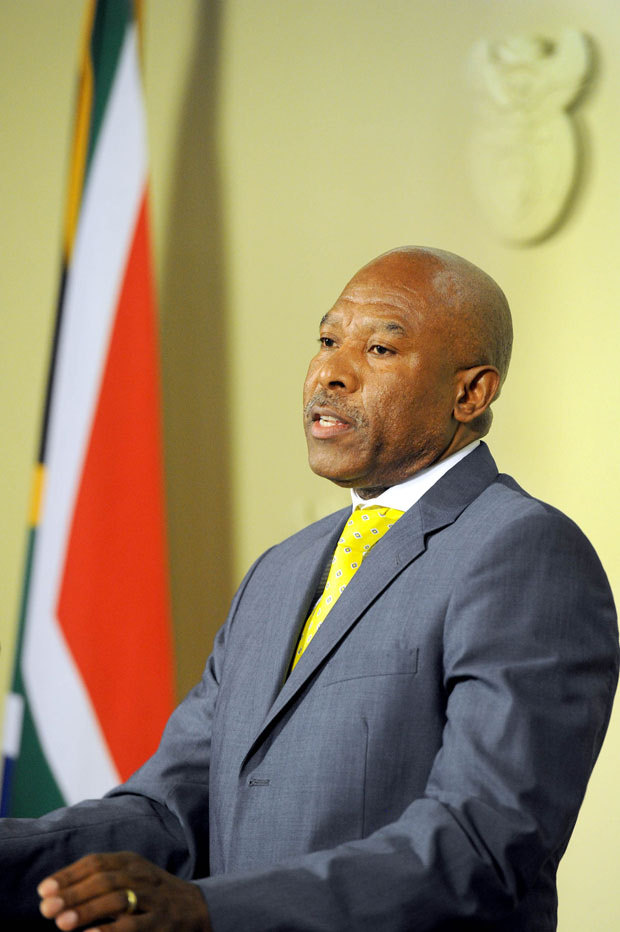SARB Cuts Repo Rate to 7% Amid Low Inflation and Positive Economic Signs
Speaking at a media briefing, SARB Governor Lesetja Kganyago explained that the decision was underpinned by clear evidence of easing inflationary pressures.

- Country:
- South Africa
In a widely anticipated move, the South African Reserve Bank (SARB) has announced a 25 basis point cut in the repo rate, bringing it down to 7%, effective 1 August 2025. The decision, taken unanimously by the Monetary Policy Committee (MPC), comes in response to moderating inflation, a strengthening rand, and signs of economic recovery after a sluggish start to the year.
A Measured Response to Inflation Trends
Speaking at a media briefing, SARB Governor Lesetja Kganyago explained that the decision was underpinned by clear evidence of easing inflationary pressures. The latest June Consumer Price Index (CPI) data showed headline inflation at 3% and core inflation at 2.9% — both at the lower end of the SARB’s target band of 3% to 6%.
“The rand has strengthened and inflation expectations have moderated,” Governor Kganyago noted. “That said, food inflation — primarily driven by rising meat prices — has edged up, and while fuel prices are no longer rising rapidly, they are declining at a slower pace compared to recent trends.”
The Reserve Bank anticipates headline inflation to rise slightly in the coming months, averaging 3.3% for the year, which is in line with earlier forecasts. Prices are expected to stabilize around the midpoint of the target range for the remainder of the forecast period, with the risks to this outlook described as balanced.
Economic Growth: Mixed Signals, Positive Momentum
While first-quarter GDP growth was a modest 0.1%, consistent with SARB’s projections, the Governor acknowledged a downward revision of earlier GDP data and noted the impact of increased U.S. tariffs on South African goods, which have weighed on the central bank’s full-year growth outlook.
“The economy’s underlying growth trend remains subdued, mainly due to structural supply-side constraints, particularly in logistics. Additionally, business and consumer confidence deteriorated during the first half of the year, increasing overall uncertainty,” said Kganyago.
Despite these headwinds, recent data signals a pickup in economic activity in Q2, supported by positive indicators and ongoing structural reforms. SARB maintains its forecast of modestly higher growth in the coming years, driven by policy support and long-term investment reforms.
Shifting the Inflation Anchor to 3%
In a move that may reshape South Africa’s monetary policy framework, Governor Kganyago revealed that the SARB has adopted a more explicit inflation target anchor of 3%, the lower bound of its current target range.
“We now prefer inflation to settle at 3%,” the Governor said. “This anchor enhances the transparency and robustness of our policy, especially amid global economic volatility.”
He explained that lower inflation expectations have helped bolster the rand and reduce long-term borrowing costs. Going forward, the MPC will use 3% as its forecast anchor, reflecting a firm shift toward a more conservative inflation stance.
This approach is part of a broader target reform initiative being conducted in coordination with South Africa’s National Treasury, with the ultimate aim of entrenching permanently low inflation and expanding policy space for the central bank.
Financial Market and Policy Implications
The repo rate cut is likely to be welcomed by businesses and consumers alike, especially as the country continues to grapple with persistent economic bottlenecks and sluggish private sector investment. Lower borrowing costs could provide much-needed relief to households and small businesses, spurring spending and investment.
At the same time, SARB’s emphasis on inflation discipline reflects its commitment to maintaining price stability, even as it supports growth. Analysts expect the rate cut to be the beginning of a cautious easing cycle, provided inflation remains contained and the external environment remains supportive.
Commitment to Transparent, Forward-Looking Policy
The MPC reiterated its commitment to data-driven and forward-looking decision-making, noting that any further policy adjustments will depend on the evolving inflation outlook, fiscal developments, and global economic conditions.
“We welcome the recent moderation in inflation expectations and would like to see expectations fall further,” said Kganyago. “This would expand policy space and make our framework more robust to shocks.”
Looking Ahead
The SARB's latest decision reflects a nuanced balancing act: supporting a fragile economic recovery while ensuring that inflation remains firmly anchored. With the introduction of a 3% inflation target anchor, the central bank is sending a clear message — that low and stable inflation remains the bedrock of South Africa’s economic policy architecture.
As structural reforms begin to take effect and external risks evolve, the central bank is positioning itself to respond flexibly yet firmly, ensuring that macroeconomic stability remains intact on the path to long-term, inclusive growth.
ALSO READ
India's Opinion Trading Platforms: Pioneering Employment Surge and Economic Growth
Ambitious economic growth targets can undermine sustainability efforts
France's Holiday Dilemma: Days Off vs Economic Growth
Vijay Utsav: India's Parliament Monsoon Session Celebrates Military Triumph and Economic Growth
Rising Rajasthan: A Blueprint for Youth Employment and Economic Growth










